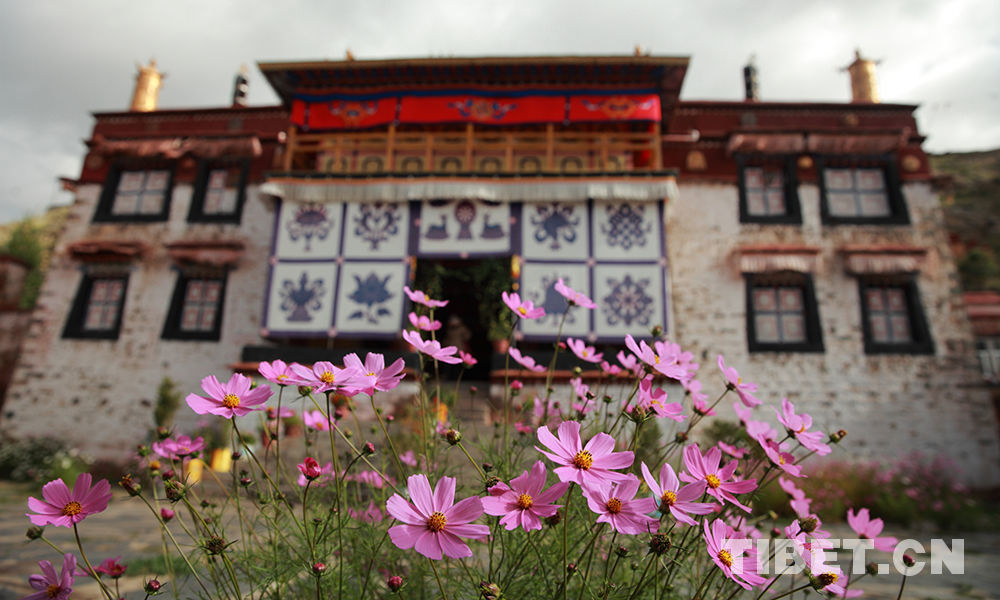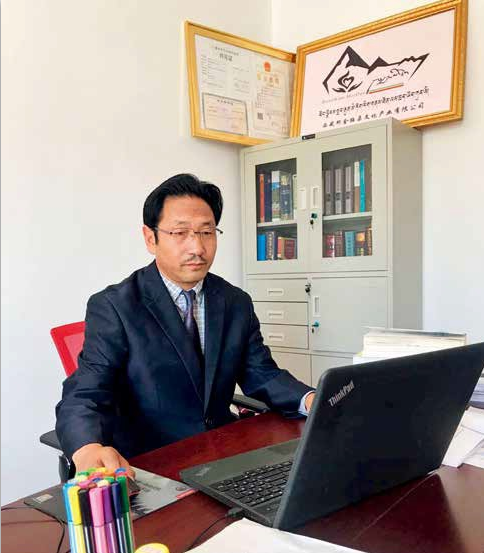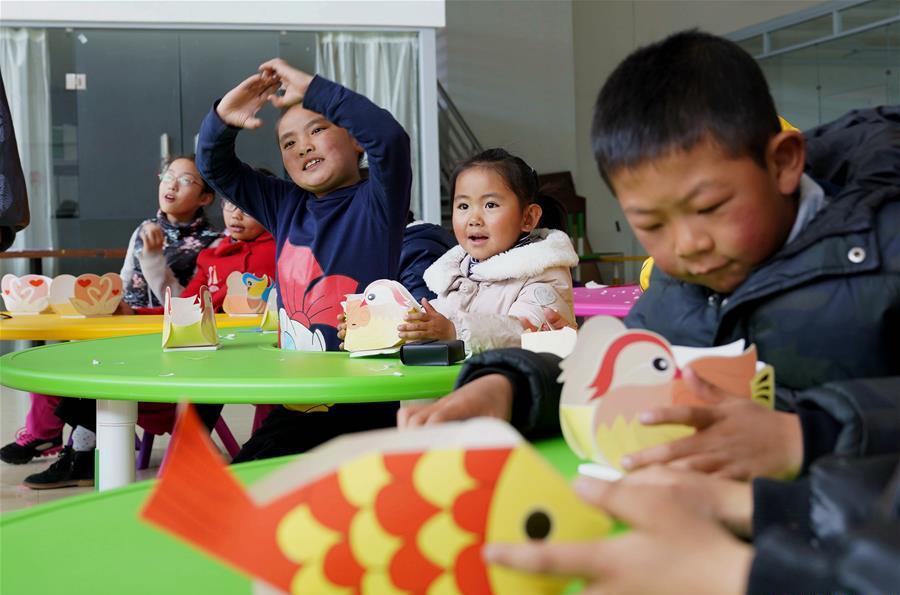Northern Tibet grassland takes on new look
Through the ages, herders in northern Tibet had been living a nomadic life chasing water and grass, and moving with the seasons. As a result, the animal husbandry there had been a primitive one without the ability to cope with natural disasters.
China's central government has been carrying out preferential policies to encourage the private ownership and raising of livestock. After the Third Plenary Session of the Eleventh Communist Party of China Central Committee held in 1978, the initiative-based production responsibility system focusing on household operation was instituted in Nagqu Prefecture in northern Tibet.
The implementation of the above-mentioned measures has notably improved the livelihood of herders in northern Tibet, but still they were bound by traditional concepts, for example, they were content with self-sufficiency, and did not know how to make money by selling their domestic animals.
In 1986, with the assistance of his relatives, a herdsman named Jinmei in Xainza County transported a dozen of yaks to Lhasa for sale. Back and forth for several times, Jinmei earned himself a "Dongfeng" truck, to the surprise of his fellow villagers.
Later, another news item in northern Tibet caused a big stir all over the Tibetan Plateau: herders from the remote and vast Shuanghu area raised more than 200,000 yuan RMB to open in Nagqu County the first livestock-breeding, industry and agriculture company owned by Tibetan herders. They purchased motor vehicles and undertook to handle wool, hide, ore and new products from elsewhere.
In October 1990, Tibet's first meat-packing plant was set up in Nagqu County. This indicated that the animal husbandry of Tibet shifted from a traditional economy into a commodity economy.
Prefectural leadership came to realize that to bring prosperity to local herders, it was imperative to open up a path linking pastures to the market. They then formulated measures to integrate livestock breeding, industry and commerce and to achieve the simultaneous development of production, supply and marketing of animal by-products.
Baima, head of the Gaercuo Township in Nyima County, which was called "no-man land", led his townspeople in transporting animal by-products to other areas for sale, reaching as far as the town of Shiquanhe in Ngari Prefecture in western Tibet and Germu City in Qinghai Province.
In the following years, the per-capita income of townspeople doubled the 1988 figure of 1,000 yuan RMB.
With the help of a poverty-reduction team from the prefectural bank credit system, the townspeople of Renmao in Nagqu County managed to market their animal by-products to the county town. Whenever there was a horse race on the grassland, the herders would pitch tents to sell local specialties on the spot. Nowadays, herders of the Town of Renmao are no longer worried about their food or clothing: 18 families have bought new tractors, and have been shuttling between the pastures and the market.
Northern Tibet boasts a vast pastureland. In the past, the ratio of domestic animals kept in stock was high, while that of domestic animals for sale was low. The pastures were overstocked and severely degrading. Science and technology are essential to transform the traditional livestock breeding into a modern one.
The fist workstation on the pasture was set up in 1987. Several years later, efforts of the technicians paid off: an area of 2.3 million mu (153,410 hectares) man-made grassland effectively alleviated degradation on the pasture.
In 1991, a snow disaster that was seen in a century severely damaged the livestock production in northern Tibet, which prompted the herders to step up pasture infrastructure construction. In four years, the regional government spent 80 million yuan RMB building disaster prevention and resistant bases in eleven counties and 147 towns in Nagqu.
A fence mesh of 3.19 million meters in length was installed, fencing in grasslands of 850,000 mu. Barns with the heating function covering a total area of 4.3 million sq. m. were built, and vet stations were set up in 91 townships. Technical staff went to spread knowledge of epidemic prevention and treatment and the improvement of livestock breed. They also offered training courses on various livestock breeding skills.

The family of Nuri milk sheep in Dangxiong County in the north of southwest China's Tibet Autonomous Region June 26, 2008, photo from Xinhua.
In 1990, a senior Tibetan livestock technician named Zhang Yun set up the first frozen yak semen breeding station in Damxung. When technicians from the station went to local herders' tents to breed yaks with frozen semen, the herders found it ridiculous: how could a man help yaks mate?
Zhang Yun, then in his 50's, made an arduous journey to the pasture, where he showed herders how to breed yaks with frozen semen. Following a period of efforts, the herders gradually accepted this novel practice.
As the largest base of Tibet's animal husbandry, the northern grassland is rich in animal by-product resources. The area's annual output of mutton and beef is 25 million kg, that of dairy products, 36 million kg, wool, 3,500 tons, cashmere, 150 tons, yak wool, 400 tons, and animal hides, 1.5 million pieces.
However, the rich resources in northern Tibet's pasture have not been used to the full. The processing value of animal by-products in Nagqu Prefecture was merely 3.5 million yuan.
The Third Forum on Work in Tibet convened in 1994 widened the vision of Tibetan people, They began to make full use of local abundant resources and to take the path of the comprehensive development of animal by-products, so as to increase the value of such products.
In 1993, herders of Bange County left the grassland to set up a cashmere and yak wool-carding factory in Germu City in neighboring Qinghai Province. Soon, cashmere sweaters named after the largest and most beautiful lake in Tibet -- Namtso -- broke into the inland market.
Holding the first soft cashmere sweater in their hands, former north-Tibetan herders, now the first generation of industrial workers, shed tears of joy. Machines are now roaring on the pastureland where melodious pastorals used to be heard.
Your Comment
Name E-mailRelated News
-
;











